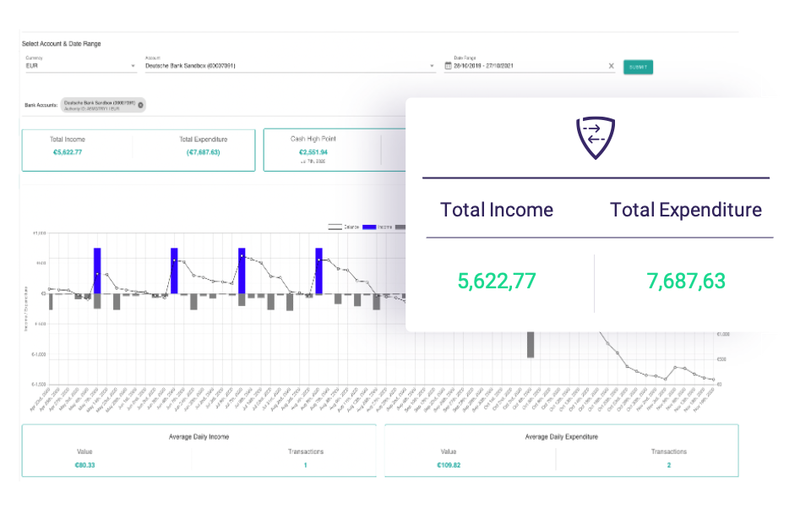Open Banking
How Open Banking is impacting auditors today
The adoption of Open Banking globally is in full force. Alex Aubrey, Commercial Director at Circit, comments

M
aturity in the UK is close since CMA led with the 2018 enforcement that nine of the UK’s largest banks must allow licensed companies to gain direct access to their systems upon account holder authorisation. Germany, France, the Nordics & several other EU countries are fast approaching this UK-level of maturity. In the US, 2018 saw the release of PSD2 compliant Durable Data API, culminating in nearly 100 banks forming an API Standardisation Group. Latin America & the Middle East have been progressing steadily since 2018, with transactional data available from 12 of the largest Brazilian banks, and Asia is also taking a regulatory route to establish widespread adoption.
Alex Aubrey, Commercial Director at Circit
What does this global adoption and maturity mean for audit teams?
The global nature and availability of Open Banking APIs firstly ensure that processes benefitting from access to banking data can be used for a larger percentage of the audit portfolio. Clients themselves have also become comfortable with Open Banking through the consumer applications they are being exposed to. For instance, an increasing number of payment methods, and the ability to select a wide range of third-party apps and services which offer a greater user experience than traditional banks, as well as financial management insights through the sharing of transactional bank data.
So, with this expanded coverage and increasing client comfort, audit teams can now realise the benefits Open Banking can bring with independent and real-time access to verified bank transactions directly from source. Compared to traditional methods of obtaining financial statements, Open Banking access can strengthen audit quality through removing paper statements and excel downloads shared by the client. Both of which can cause time delays and leave the opportunity for interference or fraud.
With this real-time access to verified bank transactions from source, audit teams can then analyse and identify trends to extract valuable insights for audit teams, along with creating more informed and value-added conversations with clients. Auditors can more readily understand their client by viewing a monthly or weekly trend analysis on cash flow which can instantly demonstrate the seasonality of a business or highlight an irregular month-by-month drop in income which needs to be discussed with the client. The initial risk assessment and planning stage of an audit is greatly enhanced prior to the fieldwork beginning. With the client’s authorisation remaining for a 90-day period during the audit, teams can obtain Open Banking data on a periodic basis providing a window into the activity of the business. Fitting with today’s audit practices, obtaining the verified bank transactions in real-time for post-year-end debtors and creditors, testing can save hours over current procedures, as well as significantly strengthening going concern status reviews.

Combining Open Banking with Analytics
Audit Analytics is also fast evolving to become the key tool to support audit teams’ improvements to audit quality and to generate efficiencies for audit staff. Investment from the Big Four has already begun with the aim of creating bespoke analytics tools. The role Open Banking data can play here is as the backbone and primary dataset used for analytics and testing. Firms of all sizes can invest in analytics across their client portfolio with verified banking data being the foundation of their application, generating an immediate return on investment through efficiencies and improved audit quality and client satisfaction.
A more familiar step towards analytics can also be applied to existing bank-side audit tests and in line with a firm’s audit methodology. For instance, management override, creditor and revenue completeness, and general ledger matching (bank tracing). Currently, creditor completeness testing often requires manual transaction-by-transaction review, and delays can be caused when sourcing the post-year-end bank statements. Leveraging Open Banking and data analytics audit teams can instantly obtain post-year-end transactions and automate the analysis to flag any potential unrecorded creditors.
Banking data is obtained directly from the bank, it is third-party evidence gathered from outside of the accounting system and independently of the client. Therefore, it should be the starting point to strengthen every audit engagement. The opportunity then exists to combine with analytics to assess if a move from sampling to testing a greater sample or 100% of transactions makes sense. Some firms are starting to do this for revenue testing, where they are matching all receipts in the bank statements to the revenue transactions in the accounting system.
The Financial Data and Technology Association (FDATA) recently awarded Circit the ‘Best Open Banking Tech Project’ award for our projects with audit teams in applying Open Banking data and analytics. We are partnering with Alliances to share these use-cases to members, and the resulting products which are in use by audit teams across Europe to modernise traditional audit processes and strengthen the audit file.